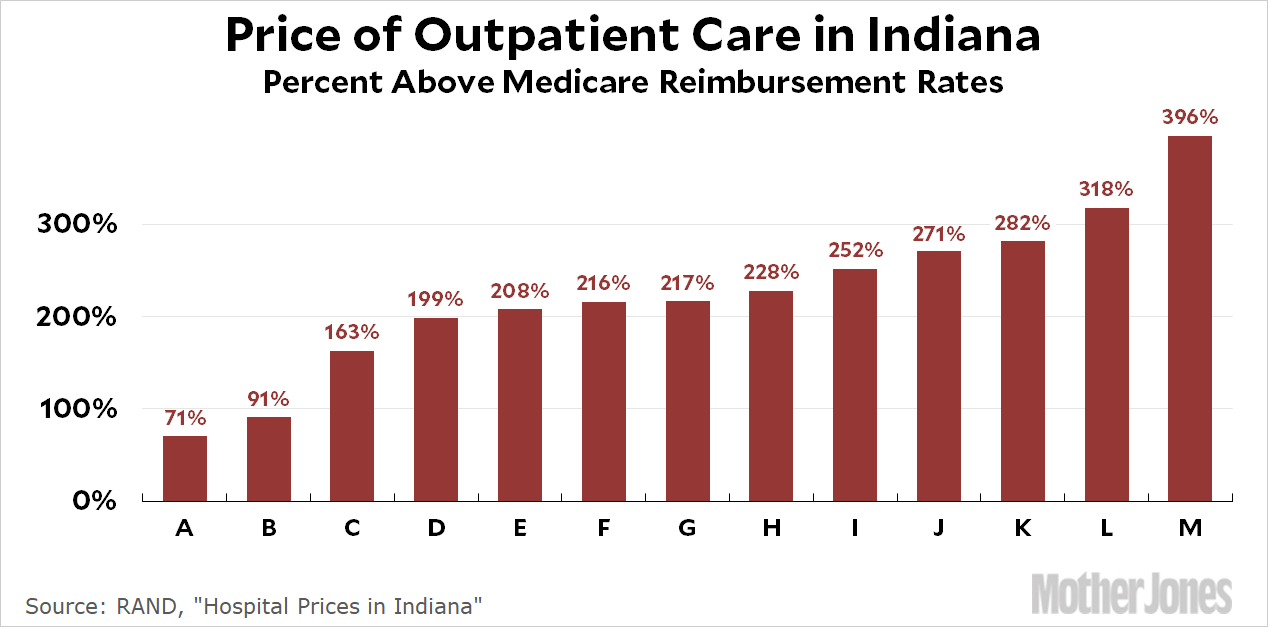Chapin White of RAND tells us that hospitals are expanding every which way in Indiana:
Indianapolis was historically characterized by geographically distinct hospital submarkets, with a dominant system controlling each area. Those geographic divisions have broken down in the last two decades, with systems building new facilities and encroaching on each other’s territory, particularly in suburban areas with concentrations of privately insured patients. As in the rest of the country, hospitals in Indianapolis have established and tightened their relationships with physician practices and used those relationships to drive referrals within their systems.
Recently, observers have speculated that the breakdown of hospitals’ geographic territories, as well as the expansion in the number of facilities, might lead to greater competition and lower hospital prices in Indianapolis. But that speculation has not been tested empirically.
In theory, this means that Indiana hospitals are competing more. At the same time, they’ve been consoldiating into a small number of big chains, and as Chapin says, they have “tightened” their relationships with physicians. This means that most physicians no longer refer their patients to different hospitals for different things. They always refer them to the same place. So what’s the upshot? Here’s a chart showing how much above the Medicare reimbursement rate Indiana hospitals charge private insurers:

There are two takeaways here. First, these hospitals charge private insurers a lot more than Medicare. The average for outpatient care was 258 percent more. For inpatient care it was 117 percent more.
Second, there’s stunning variation in prices. This is an old story, but it’s an old story that never gets old. The least expensive hospital charged private insurers 71 percent more than Medicare for outpatient services. The most expensive charged 396 percent more than Medicare for the same basket of services.
What accounts for the difference? Did big hospitals with economies of scale, lots of competition, and tight relationships with physicians charge less? In a word, no. In two words, hell no:
At the bottom of the price distribution are the independent CAHs [critical access hospitals, which are all small and rural] and three small systems….Although CAHs are, by definition, geographically isolated and have no nearby competitors, that lack of competition does not correspond to higher negotiated prices. The upper end of the price distribution is dominated by five large hospital systems, with Parkview Health standing out for having exceptionally high prices. Hospital systems and consolidation among hospitals have been cited as drivers of high and increasing prices, and these findings are consistent with that argument.
This is the not-so-hidden story of exploding medical costs. We’ve become so accustomed to hating on insurers that we hardly notice that hospital consolidation is a much bigger villain. When a big insurer has a local monopoly, it can usually negotiate lower prices from hospitals because the hospitals have nowhere else to go. But when there are lots of insurers and only one or two local hospitals, it’s the hospitals that have the upper hand. They can charge high prices because the insurers have no choice except to do business with them. As hospital systems get steadily larger and rope in more and more physicians, their effective competition decreases and they have the ability to demand ever higher prices.
Insurance companies are hardly innocent bystanders in the health care system, but if you want to really target the drivers of higher costs, look to the source: the actual providers of medical services. That means doctors, hospitals, pharmaceutical companies, and medical device makers. That’s where the real money is.


















